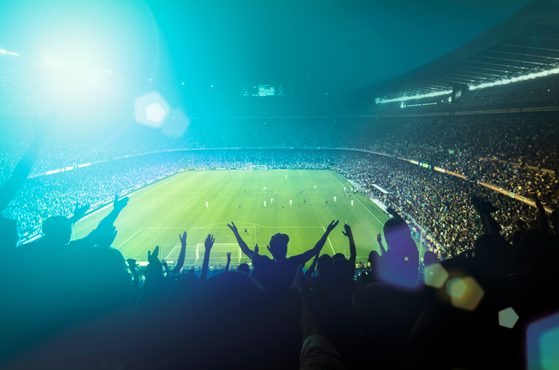Jannik Sinner — the current world number one in men’s tennis — has had a remarkable 2024. With eight titles (including two Grand Slams), his success marks the start of a new era in the sport. Yet unfortunately Sinner’s year is likely to be remembered as much for his off-court controversy as his on-court success, having twice tested positive for a banned substance.
Here, William Hardwick and qualified UK Anti-Doping (UKAD) Accredited Advisor Catherine Forshaw explain the controversies surrounding Sinner’s tests, clearances and appeals and asks — does tennis have a doping problem?
Sinner cleared of wrongdoing
In August 2024 it was revealed that Sinner had been cleared of any wrongdoing after twice testing positive for levels of a metabolite of Clostebol — a synthetic anabolic-androgenic steroid derivative from testosterone, currently banned under S.1 of WADA’s (the World Anti-Doping Agency’s) prohibited list due to its anabolic properties and potential ability to build muscle mass.
Sinner was cleared on the basis that he’d been inadvertently contaminated through treatment with his physiotherapist, Giacomo Naldi — who’d been applying a spray containing Clostebol to a cut on his hand. WADA revealed that there has been an increase in the detection of levels of Clostebol in athletes — particularly those from Italy, where creams containing Clostebol acetate are extensively used to treat abrasions and wounds.
Charges against Sinner
The International Tennis Integrity Agency (ITIA) initially charged Sinner with violating Article 2.1 and 2.2 of the Tennis Anti-Doping programme (TADP).
Article 2.1 states that “unless the player can establish a therapeutic use exemption, the presence of any prohibited substance, its metabolites or its markers in a player’s urine sample will constitute an anti-doping rule violation”.
Article 2.2 states that “unless the player can establish a therapeutic use exemption, the (attempted) use of a prohibited substance will constitute an anti-doping rule violation”.
Sinner accepted the outcome of his urine samples and admitted breaches of both articles 2.1 and 2.2. However, he contested the claim that he was at fault for the anti-doping rule violations.
The sanction for breaching articles 2.1 and 2.2 is set at a four-year ban. This can be reduced by two years if the player can rebut the presumption of intentionality. Additionally, under article 10.5 of the TADP, the ban can be eliminated if a player or other person establishes that they bear ‘no fault or negligence’ for the violation.
An independent tribunal found on the balance of probabilities that Clostebol had entered Sinner’s system unintentionally via Mr Naldi and concluded that Sinner couldn’t have reasonably known or suspected that he’d been administered with the prohibited substance by Mr Naldi. The tribunal also concluded that Sinner had done everything possible to ensure that he didn’t test positive, including the selection of his support team. It therefore concluded that Sinner bore no fault or negligence for the two anti-doping rule violations and any ban was eliminated. Despite this, Sinner lost his prize money and ranking points from the Indian Wells Open, at which the positive tests were recorded.
WADA appeal
On 26 September 2024, WADA lodged an appeal to CAS (the Court of Arbitration for Sport) with a view that the finding of ‘no fault or negligence’ was incorrect under the applicable rules. WADA is seeking a one- to two-year ban for Sinner, but not the disqualification of any results.
This appeal accepts the ITIA’s decision that Sinner didn’t intentionally dope but would change the ruling to one under Article 10.6 of the TADP, which would be a ruling of ‘no significant fault or negligence'. If successful, the ruling could stain Sinner’s achievements.
Does Tennis have a doping problem?
While tennis isn’t typically considered to have a ‘doping problem’, the number of high-profile tennis players who’ve tested positive for banned substances in recent history has been notable.
In 2016, Andy Murray aired his suspicions around doping, saying “I have played against players and thought ‘they won’t go away’ or ‘they don’t seem to be getting tired’. Have I ever been suspicious of someone? Yeah. You hear things”.
Certainly, the potential for contamination among athletes is great, whether through contaminated prescriptions, supplements, food or even sexual acts.
Was Jannik Sinner given preferential treatment?
The main point of controversy in Sinner’s case lies in his alleged preferential treatment. For some, this has called into question the integrity of the ITIA’s decision. According to the World Anti-Doping code, each time a positive result for a banned substance is recorded, a provisional ban is automatically applied to an athlete. Athletes then have the right to appeal to an independent tribunal to have the provisional ban lifted, which Sinner successfully did — twice. On the first occasion, the provisional ban was lifted a day after Sinner was notified of his positive result. The second time, this happened just three days later.
Former women’s tennis number one Simona Halep felt that her case for an anti-doping rule violation was “judged differently”. She received a nine-month suspension after her initial four-year ban was overturned by CAS. Indeed, it can take months for some players to have their appeals against provisional suspensions heard — something that British doubles player Tara Moore (who was banned for 19 months for an anti-doping rule violation) claims to demonstrate the ITIA’s preferential treatment of “top players”. Moore stressed that Sinner’s process was unlike the one she endured.
British player Dan Evans — who was banned for 12 months in 2017 after failing an anti-doping test — was particularly critical of the ITIA’s processes, highlighting how it took months for Moore or Halep to get a date for appeal. He expressed uncertainty at how the ITIA can “get the guys that are 800 in the world for drugs and gambling”, implying that those higher in the rankings may escape punishment from positive tests more lightly.
One argument would be that the distinguishing factor in Sinner’s case was that the ITIA was able to quickly identify and present the source of contamination which resulted in the immediate judgments on his case.
Iga Swiatek
In the same season, Iga Swiatek — the current women’s world number two — tested positive for trimetazidine (while she was ranked world number one) and received a one-month ban.
Despite identifying the contamination quickly, Swiatek’s ban was slightly longer due to the laboratory tests on the batch of melatonin she took. The ITIA accepted her defence that the contamination was due to the contamination of a regulated non-prescription medicine melatonin, which she reportedly took to deal with jet lag and sleep issues.
As with Sinner, Swiatek was able to quickly overturn her provisional suspension and return to competition without the outside world being aware of the positive test. Initially, she cited fatigue and personal issues as reasons for missing the September month of tennis.
The secrecy of her ban has once again drawn criticism from across the tennis and wider sporting community, with some claiming that this could suggest a lack of appetite from authorities to enforce harsher punishments against the sport’s biggest stars.
Anti-doping — the ‘grey areas’ and strict liability
We’ve all seen commentary around supposed ‘grey areas’ of anti-doping like the use of therapeutic use exemptions (TUEs) as a method of ‘authorised doping’. In cycling, a parliamentary report into the use of TUEs by British Cycling and Team Sky suggested that they’d crossed an ethical line and used performance enhancing drugs under the guise of treating legitimate medical conditions. Team Sky and British Cycling coach Shane Sutton regarded the TUE system as being a legitimate means of making ‘marginal gains’.
The strict liability principles that apply in anti-doping establish that athletes charged with an anti-doping rule violation are considered to be guilty unless they can prove their innocence. The reason for following a line of strict liability is due to the ‘grey areas’ regarding an athlete fairly or unfairly gaining an advantage over the competition. For example, when athletes use a product for enhancement but don’t intend to take a prohibited substance, the line between enhancement and doping — and between doping and cheating — is unclear.
Clearing your name
Court fees, top barristers and the overall process of litigation can be extremely expensive. In such an environment, it’s seemingly too easy for anti-doping organisations across the globe to use those who aren’t able to equip themselves for a defence to satisfy the numbers they need for their funding.
Seemingly, only the most elite athletes are likely to have the financial resources to prove contamination and clear their names in the eyes of sports fans. This had led for calls within tennis from the Professional Tennis Players’ Association for a legal aid fund so that every player can receive the same calibre of representation.
Which way will the pendulum swing on Sinner’s career?
Anti-doping is a highly complex matter — particularly where contamination is concerned — and always evokes an emotional response from people who love and follow sport.
Throughout history, we’ve seen many athletes become defined by their status as ‘drugs cheats’ — such as Lance Armstrong, Ben Johnson, Justin Gatlin and Marion Jones. There are also those who seemingly escape the ire of many despite having received positive results or being associated with disgraced coaches or doctors, such as Carl Lewis, Jon Jones, Canelo Alvarez and Alberto Contador.
While everyone’s entitled to their own views, in Sinner’s case the reality is that an independent tribunal — after detailed consideration — found his defence of the violations to be entirely plausible. It could therefore be considered unfair for the sporting world to tarnish a young athlete’s reputation for life.
Sinner’s case does however raise serious, fundamental questions around transparency in sport.
Talk to us
Our sports team is recognised both nationally and internationally as one of the largest and most experienced multidisciplinary legal teams in the sports industry. With experts in regulatory and professional conduct — including qualified UK Anti-Doping (UKAD) Accredited Advisor Catherine Forshaw — we’re able to assist athletes and organisations in anti-doping matters.
We serve an exceptional client base that includes elite sports clubs, national governing bodies, international federations and large sports agencies both throughout the UK and around the world, as well as high-profile individuals.
Talk to us by giving us a call, sending us an email or completing our contact form below.





